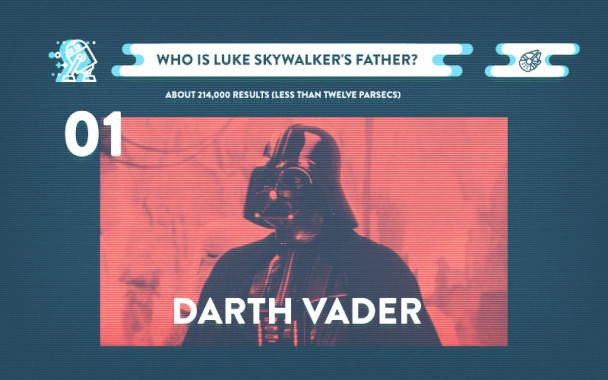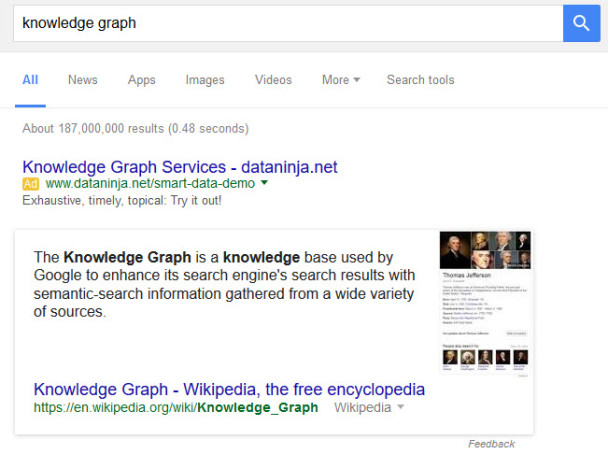Table of Contents

When Google answers queries from searchers, it may first classify the queries it responds to when trying to give a searcher the best response that it can. A patent granted to Google this week describes how that classification process might work by telling us about two different types of classifications that the search engine might make regarding a query.
Related Content:
In the past few years, Google has been providing answers to searchers by responding with information about things or named entities (specific people, places, and things) when those are the most helpful answers. Google’s search results often show query results side-by-side with knowledge panels taken from something Google refers to as a knowledge graph.
Google tells us that a knowledge graph is information taken from a knowledge base, aimed at enhancing search results by providing meaningful answers from a wide variety of resources:

This new patent tells us that queries may be classified as one of the following two types:
1. Entity triggering queries
This type of query has an answer that may include “the name of an entity, such as a person, a business, a geographical location, or the like.” So, a query asking a question such as “Who directed Star Wars?” is asking for an answer such as George Lucas. The answers to these queries are likely to be entity names or some other kind of entity identifier.
2. Description Triggering queries
Some queries are asking for information about a topic or subject and want more than just the name of an entity or an entity identifier. Those can involve an entity, but an entity is not the answer to the query. For instance, “what is Star Wars about?” is asking for a description of the plot of the movie Star Wars, and it is best answered with a description rather than an entity name.
The patent tells us that it is classifying queries based upon the type of answer that is appropriate for those queries. The appropriateness of the type of answer can be based upon the characteristics of search results that are relevant to the query.
This process of classification involves the submission of a query and the search engine attempting to extract entity identifiers from search results of that query. The patent tells that a description triggering query might ask for more than just a name of an entity:
As another example, a query that specifies an entity by name and is a request for information about the named entity may be classified as a description-triggering query. Typically, an appropriate response to a description-triggering query is information describing the named entity, including information beyond simply an identifier for the named entity. For example, in some implementations, a response to a description-triggering query includes a natural language statement (e.g., a phrase, sentence, etc.) about the named entity. The response to a description-triggering query maybe a snippet associated with one or more search results that are responsive to the query.
This differs from an entity-triggering query, which focuses primarily upon providing an entity as an answer:
For example, a query that is a request for a name of a particular entity (e.g., a name of a particular person, place, thing, idea, etc.) may be classified as an entity-triggering query. Typically, an appropriate response to an entity-triggering query is the requested name (e.g., an entity identifier that identifies the particular entity). In many instances, the requested name will be different from entity identifiers included in the query.
Why is this approach so concerned about how the query is classified, and whether the answer it provides fits that classification? The patent tells us that its purpose to increase confidence in the answer provided is correct:
In some implementations, a classification system outputs confidence scores for classification decisions. For example, the confidence score may indicate an amount of confidence the classification system has in the correctness of a classification of a particular query. In some implementations, a response format is selected based on a classification only when the confidence score is determined to satisfy a threshold. For example, a response format designated for entity-triggering queries is used only when a confidence score indicating confidence that the query is an entity-triggering query exceeds a threshold value. Confidence scores can be generated based on search results for a query or any of the other factors or determinations described below for classifying queries.
A correct answer is a better answer than one that might have a high PageRank because it is linked to as a popular answer by web publishers. This type of correctness seems to be something that Google is moving towards in responding to queries.
The patent is:
Classifying queries
Inventors: John J.Lee and Melissa K. Carroll
Assignee: Google Inc.
US Patent 9,229,974
Granted January 5, 2016
Filed: October 22, 2012
Abstract
Methods, systems, and apparatus, including computer programs encoded on a computer storage medium, for classifying queries. A query that includes one or more query terms is received. One or more entity identifiers are extracted from one or more search results that are responsive to the query. One or more of the query terms are compared with the extracted entity identifiers. Based on comparing the query terms with the extracted entity identifiers, the query is classified as an entity-triggering query or as a description-triggering query.
Take Aways
This concern about how confident a search engine might be in providing the right answer to a query when it involves queries that may be about entities seems to fit into a Google that is interested in providing answers that fit into its understanding of a knowledge graph as we’ve been seeing with Google’s recent release of a Knowledge Graph Search API. The API allows us to perform searches that might involve different entities that have been included in Google’s knowledge graph, to learn more about what it might know about different entities. For instance, here’s what the Google Knowledge Graph Search API shows us about Darth Vader, in json-LD format (the reference to former Vice President Dick Cheney in the results is interesting):
{
“@context”: {
“@vocab”: “https://schema.org/”,
“goog”: “https://schema.googleapis.com/”,
“EntitySearchResult”: “goog:EntitySearchResult”,
“detailedDescription”: “goog:detailedDescription”,
“resultScore”: “goog:resultScore”,
“kg”: “https://g.co/kg”
},
“@type”: “ItemList”,
“itemListElement”: [
{
“@type”: “EntitySearchResult”,
“result”: {
“@id”: “kg:/m/0f2y0”,
“name”: “Darth Vader”,
“@type”: [
“Thing”
],
“description”: “Star Wars character”,
“image”: {
“contentUrl”: “https://t3.gstatic.com/images?q=tbn:ANd9GcSqqLcmFpb_G-29ZasM4S6ehjNMe5QpAeGPX1N2HKDU-ewVjYcQ”,
“url”: “https://commons.wikimedia.org/wiki/File:Star_Wars_Celebration_V_-_501st_room_-_Darth_Vader_costume_(4940988304).jpg”,
“license”: “https://creativecommons.org/licenses/by/2.0”
},
“detailedDescription”: {
“articleBody”: “Darth Vader, born Anakin Skywalker, is a fictional character in the Star Wars universe. Vader appears in the original trilogy as a pivotal figure, and his past as Anakin Skywalker is central to the prequel trilogy.n”,
“url”: “https://en.wikipedia.org/wiki/Darth_Vader”,
“license”: “https://en.wikipedia.org/wiki/Wikipedia:Text_of_Creative_Commons_Attribution-ShareAlike_3.0_Unported_License”
},
“url”: “https://www.starwars.com/databank/darth-vader”
},
“resultScore”: 934.197998
},
{
“@type”: “EntitySearchResult”,
“result”: {
“@id”: “kg:/m/0d0vj4”,
“name”: “Dick Cheney”,
“@type”: [
“Thing”,
“Person”
],
“description”: “Former Vice President of the United States”,
“image”: {
“contentUrl”: “https://t3.gstatic.com/images?q=tbn:ANd9GcQNcPALLS2AtN16NAooOZiCW2Llkq17S92BaOxtLl79XO1bEC3E”,
“url”: “https://en.wikipedia.org/wiki/Dick_Cheney”
},
“detailedDescription”: {
“articleBody”: “Richard Bruce “Dick” Cheney is an American politician and businessman who was the 46th Vice President of the United States from 2001 to 2009, under President George W. Bush.n”,
“url”: “https://en.wikipedia.org/wiki/Dick_Cheney”,
“license”: “https://en.wikipedia.org/wiki/Wikipedia:Text_of_Creative_Commons_Attribution-ShareAlike_3.0_Unported_License”
}
},
“resultScore”: 283.391327
},
{
“@type”: “EntitySearchResult”,
“result”: {
“@id”: “kg:/m/0h51wcs”,
“name”: “Darth Vader Grotesque”,
“@type”: [
“VisualArtwork”,
“Thing”
],
“image”: {
“contentUrl”: “https://t1.gstatic.com/images?q=tbn:ANd9GcRF1seaOJyWRbpephSCoM7VPw49cctpd3kCmsHG5aTYEk3O38RX”,
“url”: “https://en.wikipedia.org/wiki/Darth_Vader_Grotesque”
},
“detailedDescription”: {
“articleBody”: “Darth Vader Grotesque is a limestone grotesque by Jay Hall Carpenter. It is located at the Washington National Cathedral, Northwest, Washington, D.C., United States.n”,
“url”: “https://en.wikipedia.org/wiki/Darth_Vader_Grotesque”,
“license”: “https://en.wikipedia.org/wiki/Wikipedia:Text_of_Creative_Commons_Attribution-ShareAlike_3.0_Unported_License”
}
},
“resultScore”: 243.62558
},
{
“@type”: “EntitySearchResult”,
“result”: {
“@id”: “kg:/m/0jvbd3z”,
“name”: “Darth Vader and Son”,
“@type”: [
“Book”,
“Thing”
],
“description”: “Book by Jeffrey Brown”,
“url”: “https://www.chroniclebooks.com/titles/pop-culture/film-movies/darth-vadertm-and-son.html”
},
“resultScore”: 201.075027
},
{
“@type”: “EntitySearchResult”,
“result”: {
“@id”: “kg:/m/0_kfmyt”,
“name”: “Darth Vader”,
“@type”: [
“MusicRecording”,
“Thing”
],
“description”: “Song by Highasakite”
},
“resultScore”: 196.140213
},
{
“@type”: “EntitySearchResult”,
“result”: {
“@id”: “kg:/m/07gwf5”,
“name”: “The Glove of Darth Vader”,
“@type”: [
“Book”,
“Thing”
],
“description”: “Book by Hollace Davids and Paul Davids”,
“detailedDescription”: {
“articleBody”: “The Glove of Darth Vader is the first book of the Jedi Prince series by Paul Davids and Hollace Davids, and was released in June 1992. It is preceded by the novel The Truce at Bakura and followed by the second Jedi Prince novel The Lost City of the Jedi.”,
“url”: “https://en.wikipedia.org/wiki/The_Glove_of_Darth_Vader”,
“license”: “https://en.wikipedia.org/wiki/Wikipedia:Text_of_Creative_Commons_Attribution-ShareAlike_3.0_Unported_License”
}
},
“resultScore”: 191.13121
},
{
“@type”: “EntitySearchResult”,
“result”: {
“@id”: “kg:/m/092w2q”,
“name”: “Dark Lord: The Rise of Darth Vader”,
“@type”: [
“Book”,
“Thing”
],
“description”: “Novel by James Luceno”,
“detailedDescription”: {
“articleBody”: “Dark Lord: The Rise of Darth Vader is a novel set in the non-canonical Star Wars Legends continuity, written by James Luceno, that was published by Del Rey on November 22, 2005. “,
“url”: “https://en.wikipedia.org/wiki/Dark_Lord:_The_Rise_of_Darth_Vader”,
“license”: “https://en.wikipedia.org/wiki/Wikipedia:Text_of_Creative_Commons_Attribution-ShareAlike_3.0_Unported_License”
}
},
“resultScore”: 186.523438
},
{
“@type”: “EntitySearchResult”,
“result”: {
“@id”: “kg:/m/0skg37j”,
“name”: “Darth Vader vs. Adolf Hitler”,
“@type”: [
“MusicRecording”,
“Thing”
],
“description”: “Song by Epic Rap Battles of History”
},
“resultScore”: 184.509277
},
{
“@type”: “EntitySearchResult”,
“result”: {
“@id”: “kg:/m/0j9csk7”,
“name”: “Shawn Rescues Darth Vader”,
“@type”: [
“TVEpisode”,
“Thing”
],
“description”: “TV Episode”
},
“resultScore”: 155.086792
},
{
“@type”: “EntitySearchResult”,
“result”: {
“@id”: “kg:/m/0dnh4z4”,
“name”: “En Wannabe Darth Vader”,
“@type”: [
“MusicRecording”,
“Thing”
],
“description”: “Song by Nephew”
},
“resultScore”: 154.719238
}
]
}
Search News Straight To Your Inbox
*Required
Join thousands of marketers to get the best search news in under 5 minutes. Get resources, tips and more with The Splash newsletter: